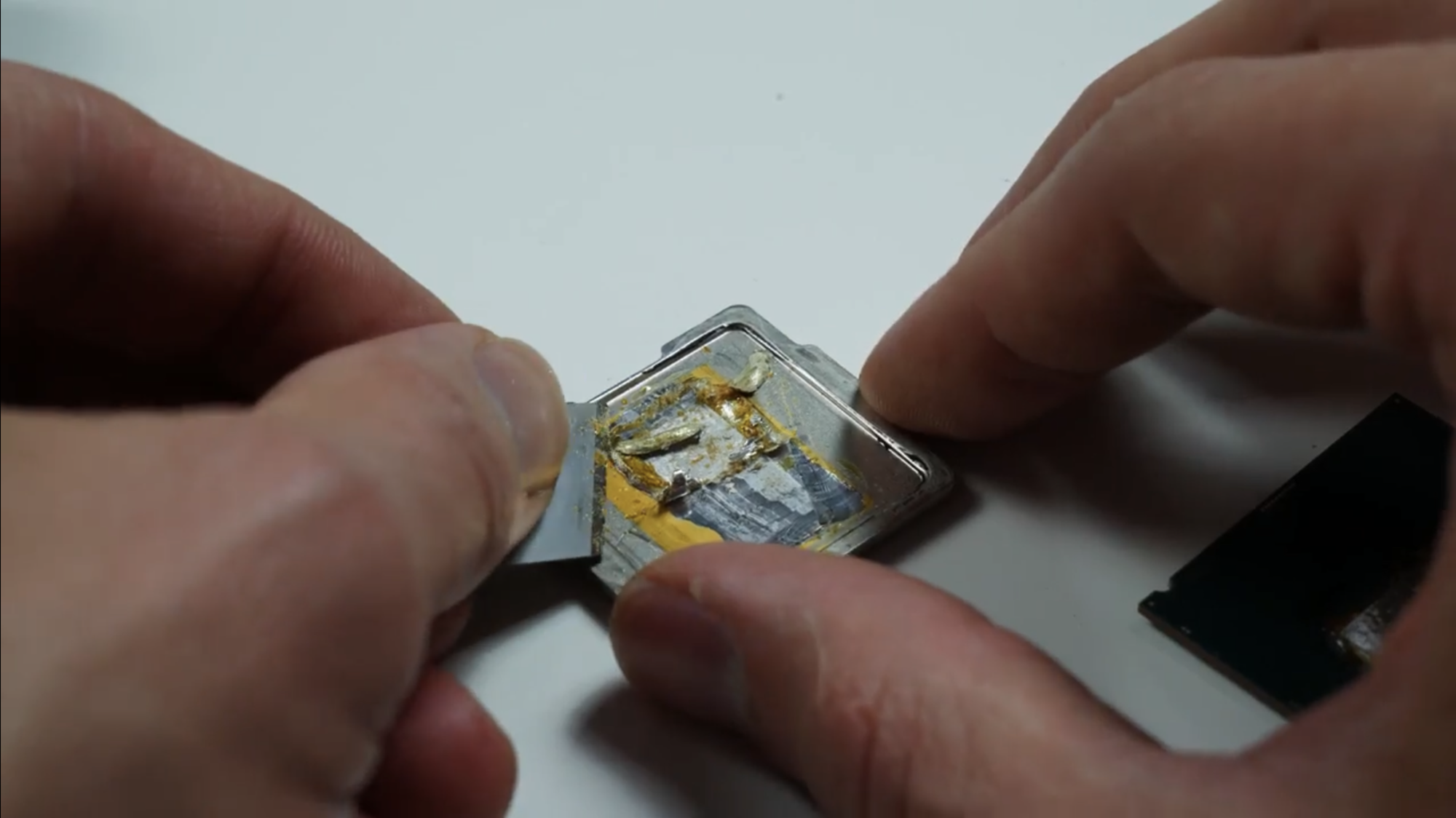- Joined
- Mar 3, 2018
- Messages
- 1,713
Der8auer noticed that his 9900k was running hotter than it should, especially when compared to an 8700k with inferior TIM. While the extra two cores definitely account for some of the heat, der8auer delidded a 9900k and took some measurements. As it turns out, the 9900k's die is significantly taller than the 8700k. As the CPU sits at the bottom of the silicon "stack", there's more material for that heat to go through. Sanding some of that material off resulted in a significant temperature decrease under load.
Be sure to check out the full video here.
Be sure to check out the full video here.
![[H]ard|Forum](/styles/hardforum/xenforo/logo_dark.png)
